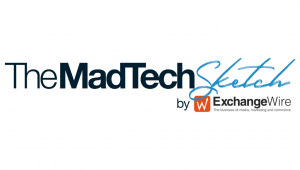The Evolution of SSPs & DSPs: Are We Headed for a Converged Future?
by on 29th Apr 2025 in News

Are we headed for a converged future? And, if we are, who stands to gain from a unified platform advertising ecosystem? Harry Menear examines the evolution of SSPs and DSPs.
Thanks largely to trade media coverage over the last few years, the fight between supply-side platforms (SSPs) and demand-side platforms (DSPs) has been framed to look inevitable. Never an ecosystem to shy away from a little drama, the very public drawing of battle lines has resulted in a sort of conventional wisdom throughout the ad tech sector that positions SSPs and DSPs on opposing sides of a fight to fill an evolutionary niche. A fight with one survivor; or, at least, one dominant winner.
Who that winner will be, however, is unclear, as DSPs and SSPs manoeuvre in an attempt to subsume one another. “We’re in a state of flux,” says Will Jennings, head of paid media at digital marketer Charlie Oscar. “In the last two-to-three years, we’ve seen each side try to circumvent the other in order to streamline processes and save on intermediate costs.”
This trend towards supply-path optimisation (SPO) – the process of ad tech players, including buyers, sellers, and vendors, trying to refine the routes between advertiser spend and the publishers and broadcasters displaying their ads – has been creeping along for several years, and has already knocked a fair few less-than-optimised players out of the industry on both the DSP and SSP sides. Recently, this included the demand-side platform provider MediaMath. In 2025, however, we’re seeing a more aggressive push towards convergence (DSPs offering SSP services though a single unified platform) from both sides, leading some in the industry to question whether we’re heading for a unified future.
The case for convergence
“There’s a number of DSPs and SSPs on the market of varying size, with large amounts of overlap between which platforms can interact, making it a murky world for all but the most programmatically savvy advertisers to operate within,” Jennings says. As a result, he supposes that “A unified platform, at least from the outside perspective, seems to be the most logical solution in a time where the industry is craving consolidation and ease of activation.”
Certainly, there are arguments being made that a unified DSP and SSP environment would have its benefits.
DSPs and SSPs are both key participants in the programmatic advertising ecosystem, but they serve different functions – different masters. They’re two participants in a trading system; publishers offer their ad inventory through an SSP, and advertisers or agencies bid on ad slots using the DSP.
Thomas Park, SVP product strategy at Adform, draws similarities with the stock market: “SSPs offer advertising inventory that is available for sale at any given point in time. The characteristics of that advertising inventory are described in default fields in a standardised protocol to ensure compatibility with the buying criteria of the advertising clients. If the criteria match, a trade is negotiated between DSP and SSP using a real-time auction.”
The two types of platform interact using a standardised protocol that documents the characteristics of the supply available so it can be matched to the advertisers’ targeting criteria (ad dimensions, viewer location, etc.) on the demand side.
They’re “two key cogs in the programmatic ecosystem,” adds Jack Shearman, senior programmatic manager at The Kite Factory, with “one side that traditionally benefits the advertiser, the DSP, and the other that benefits the publisher, the SSP.” While the two types of platform are aligned with different clients, Shearman stresses that “their relationship has always been symbiotic.”
Could that symbiosis be improved by bringing SSP capabilities into a DSP, or vice versa?
There would, Shearman argues, be some undeniable benefits to a more converged programmatic ecosystem which “has always been plagued by numerous, sometimes invisible middlemen, allowing for data loss, fraud and wasted budget, which then leads to a general lack of confidence from advertisers.” Convergence would essentially bring the two sides closer together, removing intermediary steps and “and providing a cleaner bid journey from publisher to advertiser and back again.” Removing steps in a convoluted process could undeniably reduce opportunities for intermediaries to extract additional value from advertisers. “With less waste, more of the advertiser’s budget is being spent on media, and more of that budget is then being passed back to the publisher,” Shearman says.
It’s an attractive idea from the perspective of advertisers. Jennings reflects, “I would be surprised if the mainstream consensus from the brand perspective wasn’t to converge and consolidate tech, pushing for greater efficiency, transparency, and control in programmatic.” However, parties on the edges of the equation aren’t necessarily guaranteed to benefit. Shearman warns that “A converged system … may allow the platform to set their own prices, and make it harder to spot hidden fees. In this instance it's the platforms themselves that stand to gain the most.”
So, the question remains with no clear answer: if there’s to be a fight to create a converged SSP/DSP environment, who wins?
The Trade Desk “versus” Magnite
One of the better-publicised theatres in the “war” between DSPs and SSPs, is the unfolding exchange between DSP, The Trade Desk, and Magnite, an SSP.
The Trade Desk announced its OpenPath tool in February of last year – a product that creates a more direct link between advertisers and publishers. Despite arguing that this isn’t a step towards cutting SSPs out of the equation entirely, The Trade Desk CEO, Jeff Green, said in a recent earnings call that OpenPath enables “the biggest content owners in the world to integrate with [The Trade Desk] directly,” meaning that advertisers can do their own yield management and eliminate the need to use an SSP. “They can be an SSP themselves if they'd like to,” said Green, adding that he expects “many of the biggest content owners in the world” to take this route, “especially in CTV and audio.” This looks, at least from the outside, like a DSP trying to give its clients a way around SSPs.
From the supply side, Magnite CEO Michael Barrett called large parts of the argument that OpenPath will ultimately displace SSPs “flat out wrong”, asserting that, while Trade Desk argues that “OpenPath is more efficient for sellers and avoids the unnecessary fees of middlemen,” the Trade Desk also “charges sellers a healthy fee to use OpenPath in addition to their fees on the buy side.” In the end, he asks, if “economics are unchanged” for publishers, “how's that more efficient?” He also criticised the claim by Green that each seller using OpenPath would be better served conducting its own yield management. “This misses the very obvious fact that most sellers don't have this technology and would be incredibly expensive and inefficient to build in-house,” Barrett says.
Despite the exchange of claims, rebukes, and counter-rebukes, however, both Green and Barrett are reticent to adopt an openly hostile posture – the reason for which, I’m willing to go out on a limb and say, is that their positions aren’t as at-odds with one another as the media landscape depicts. “This isn't some back alley fight,” Barrett said of the relationship between his and Green’s companies. “We have the exact same worldview.”
Speaking with other industry figures, it’s apparent that there most certainly are compelling arguments for the consolidation of SSPs and DSPs into centralised, unified platforms.
However, the majority of people I spoke to agreed that such a transformation would entail a complete – nay, radical – transformation of the ad tech sector. The future would be sufficiently different from the landscape as it functions now that it’s impossible to tell from where we’re standing who the winners would be. Or, should I say, the real winners. As Nathan Taylor-Billings, head of addressable activation at the UK&I office for global marketing agency KINESSO, cautions, the main beneficiaries of a shift to a converged DSP-SSP future might not be the victors of that particular struggle. And, more importantly, the benefits might not be worth the potential drawbacks. “While a unified platform might offer some benefits, the potential drawbacks and challenges are substantial and require more thought by the wider industry,” he cautions.
In short, no one wants to break the status quo too badly. “What we are witnessing is not reinvention of the business models themselves, but rather strategic moves towards driving incremental function and value,” argues Danner Close, VP of demand platforms, at OpenX. While Close admits that both sides are pursuing SPO in their own ways, with SSPs working closer with buyers, and DSPs establishing stronger publisher connections, “that doesn’t mean replacing one another.”
The real winners, argues Park, wouldn’t be platform providers at all. Rather, he suggests, the “primary beneficiaries of a fully converged model would be the advertisers, as the overall cost of buying media would be reduced.” Not only that, but it wouldn’t be in the interest of the publishers as “they make a fair margin from the trading dynamics between SSPs and DSPs.”
The “sweet spot,” therefore, is a model where DSPs and SSPs “continue to be distinct platforms but are closely synced with full data compatibility, direct buying connections and standardised setups, maximising the accuracy and quality of the advertising execution.”
Close adds that “SSPs and DSPs each bring unique value to the ecosystem, and the relationship between them is continuing to evolve, as do many relationships.”
Looking ahead, Taylor-Billings predicts: “Over the next few years, I think SSPs and DSPs, broadly speaking, will remain separate. It works well in today's world and brands are able to take advantage of both worlds producing meaningful results and better brand outcomes.”
Some degree of convergence is very likely, but no one on any side seems eager to bet on being the last one standing when the dust settles. The most likely course of events, according to Jennings, is “a partial convergence,” where larger platforms vertically integrate in order to close the gap between advertiser and publisher, but also with independent SSPs diversifying to support first party data, and DSPs absorbing some SSP functionality. However, he says, “complete consolidation is unlikely.”











Follow ExchangeWire